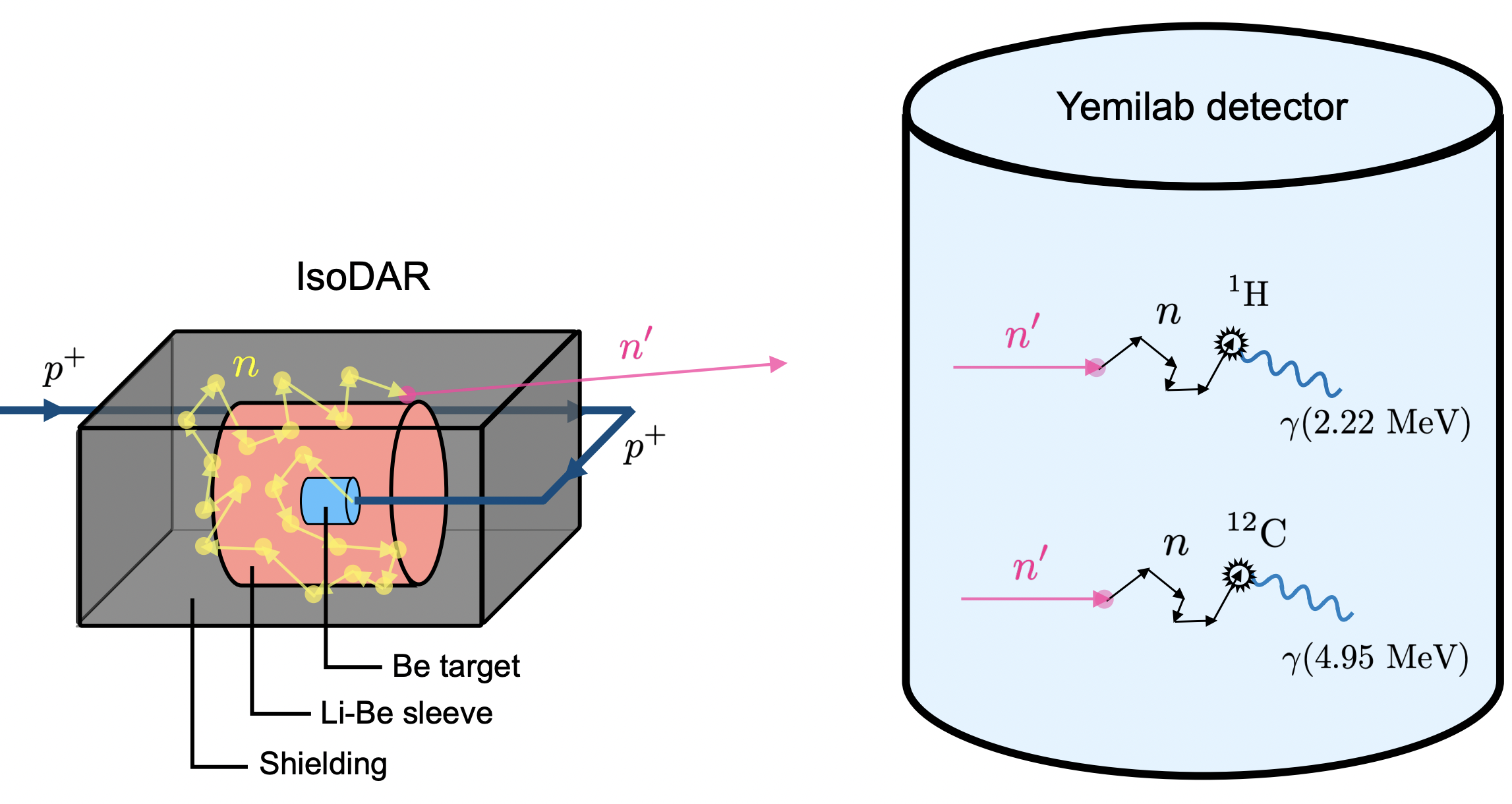Rare Particle Searches with IsoDAR
Dark matter makes up more of our universe than ordinary matter, yet we’ve only been able to observe it through gravitational interactions. One possible theory is a dark sector: a family of particles that mirror some of those in the Standard Model, but interact only through gravity. IsoDAR is poised to investigate more than one dark matter candidate; it can set impressive limits on parmater space of the MeV-scale axion-like particles (ALPs).
Motivating Mirror Neutrons
The universe contains more matter than antimatter. Cosmology predicts that the universe ought to have been created with equal parts matter and antimatter, implying that there must be some mechanism, called baryogenesis, through which this imbalance came about. Baryon number is a measure of matter compared with antimatter—more specifically, quarks get a baryon number of ⅓, while antiquarks have a baryon number of -⅓. Any baryogenesis mechanism would alter the total baryon number, in order to end up with so much more matter than antimatter. Under the Standard Model, however, baryon number is conserved. It’s possible some of the antimatter shifted into a dark matter equivalent, resulting in true conservation of baryon number, but rendering the quarks that maintain the balance invisible. These dark quarks, being analogs to the quarks of the Standard Model, could indicate a dark realm, mirroring baryons, such as neutrons, and other particles of the visible world.
Neutrons, outside of the atom, undergo beta decay into a proton, an electron, and an anti-electron neutrino. Physicists have attempted to measure the lifetime of a free neutron, as it’s linked to other important constants in the Standard Model, as well as having consequences in astrophysics and cosmology. However, there’s a discrepancy between results from different measurement methods. “Bottle” experiments measure this lifetime by levitating ultracold neutrons in a trap, and counting survivors at different storage times. These measurements are then fitted to an exponential decay. “Beam” experiments instead count the number of neutrons in a beam, as well as the number of protons that come from decay, and fit this to a decay rate. The beam experiments measure a lifetime significantly longer than the bottle experiments do. No unaccounted systematic error has been found that can explain this discrepancy. Mirror neutrons may offer an explanation. Since the beam experiments deduce the neutron lifetime by measuring the number of decay protons, neutrons that decay into mirror neutrons would be overlooked, resulting in an underestimate of the decay rate, and an overestimate of the neutron lifetime. The bottle experiments, since they measure the number of surviving neutrons, would observe this decay, giving them a shorter measured lifetime than the beam experiments.
The n → n' process would be an oscillation, analagous to other neutral particle oscillations, such as kaon, neutrino, and B-meson oscillations. This would also mean that the n' coudl oscillate back to n.
Mirror Neutron Production in IsoDAR
When protons irradiate IsoDAR's target, the Beryllium releases a large number of neutrons which propagate freely through the target material. If mirror neutrons exist, some of the free conventional neutrons may oscillate into the dark n' state. These mirror neutrons may then propagate unimpeded into the detection volume of Yemilab's liquid scintillator, which is shielded against neutrons, and on occasion, these mirror neutrons may oscillate back into their Standard Model counterparts (in current work, we explore how these dark neutrons, which may be Majorana, may be detected once they oscillate out of their dark state into an antineutron state) leaving a distinct signature in our detector. This signature corresponds to the release of a photon with a specific, predictable energy, based on what atom in the liquid scintillator the neutron is captured by. This detection mechanism is called "neutrons-shining-through-walls", in direct analogy to the strategy IsoDAR will use to detect ALPs.
